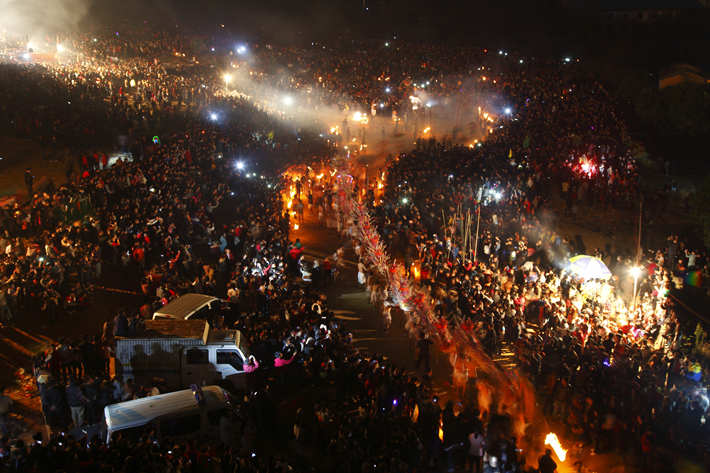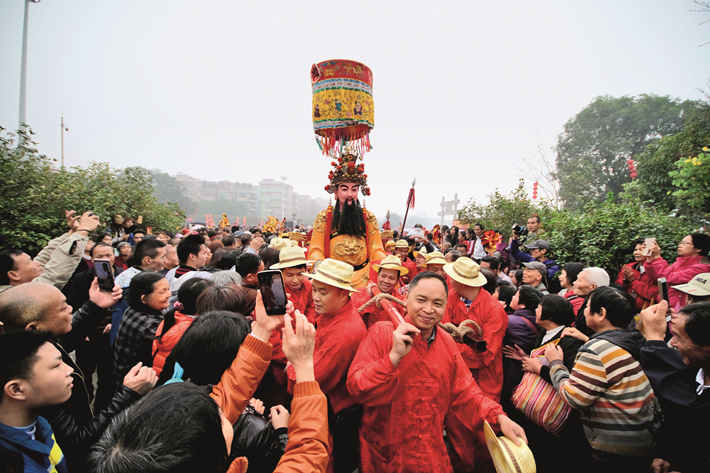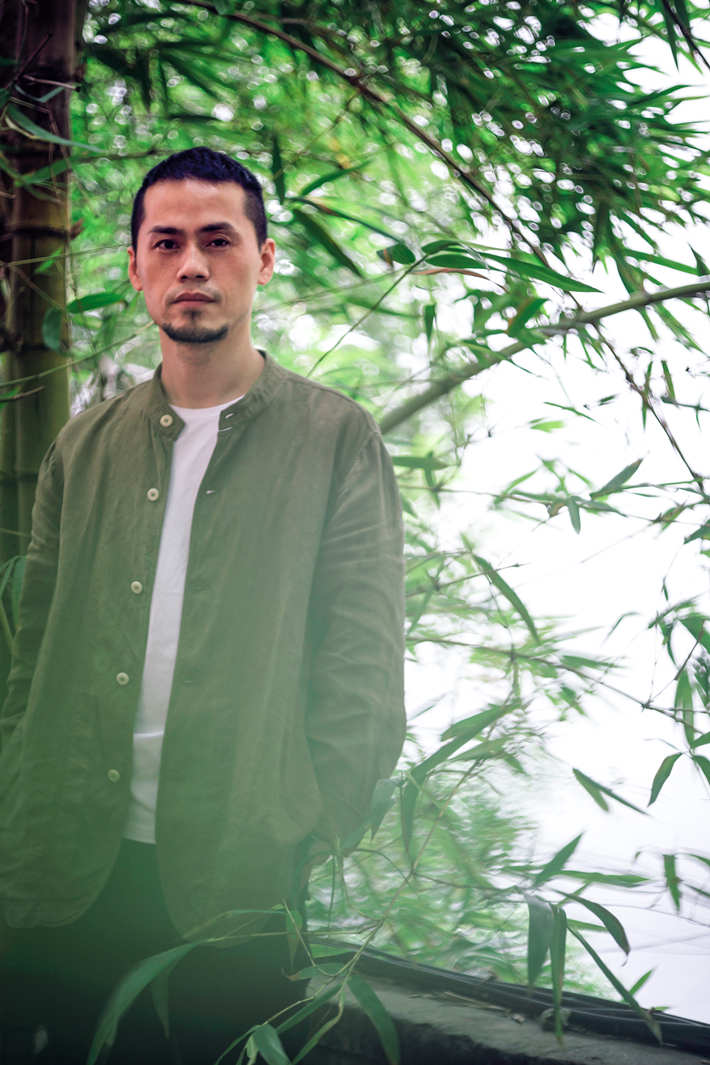Documenting the Conflict and Integration of Lingnan Culture

Since 2006, professional Chinese photographer Er Dongchen has traveled to more than 30 regions in Guangdong province to take millions of photos of village, architecture, humanities, food, and plants in the Lingnan region. He continuously polished and refined these materials to design many original cultural creative products with Lingnan cultural elements to put a spotlight on Lingnan culture.
Er Dongchen was originally named Chen Minghui. He took on the new name to express insignificance as an individual. In 2002, 21-year-old Er arrived in Guangzhou alone. His initial impression of the place was “down to earth, tolerant, and full of vitality.” As he traversed Guangdong, he gradually started feeling its “magic.” “In the villages, the shape of every building and every element of local folklore is profound,” he said. “There is no end to the knowledge to be gained here. You are learning the entire time.”

Fire dragon dance in Puzhai Town,Fengshun County, Meizhou City during the 2012 Lantern Festival.Meizhou people practice the annual traditional folk cultural activity to pray for good weather,a good harvest and safety.
Located along China’s southern border, the Lingnan region has many unique folk cultures that formed over thousands of years. Although Guangdong served as the frontier of China’s reform and opening up and technological development, these ancient customs continue to retain strong endurance. Among others, the annual dragon boat racing remains the quintessential traditional folk event in Lingnan.
Er introduced the Guangdong dragon boat racing ritual as starting on the eighth day of the fourth lunar month and continuing until the fifth day of the fifth lunar month. Over the years, he has continued to observe dragon boat folklore while photographing various “dragon boat races” in different places such as Guangzhou and Nanhai of Foshan. He was most impressed by a dragon boat in Shipai Village, Tianhe District, in Guangzhou. Due to the advancement of urbanization, villagers were left nowhere to place the dragon boats for the rest of the year, so they have to store them in nearby villages and row along the Pearl River estuary into town during events.

February 13, 2017: The traditional folk festival “Birth of Boluo” is held at the Nanhai (South Sea) temple fair in Huangpu District,Guangzhou City. Boluo refers to the South Sea God.During the annual event,people continue the ancient tradition of worshiping the South Sea God and praying for safety at sea and the well-being of the people.
“Following the traditional route, I sat on a dragon boat in Huangpu Shuanggang Village,” recalled Er. “As the dragon boat floated away from the village, I saw a large shipyard. Many people were cleaning the dragon boats while singing exactly as they have for centuries. But then, Guangzhou Tower, Liede Bridge, and all kinds of skyscrapers slowly crept into view. Tradition and modernity collide like this. The contrast between old and new is wonderful. Times are progressing, but simple traditions will always persist. These are real progress of times.”

Over the past decade, Chinese photographer Er Dongchen traversed Guangdong Province to take millions of photos of Lingnan villages, buildings, customs, foods and plants.
He has recorded imagery of the folk custom of dragon boat racing for more than ten years and seeks to continue to do so. “I want to capture the magical conflict and fusion in the evolution of Lingnan culture,” he said. “Ancient houses, customs, and products are still intact in rapidly developing Guangdong. This contrast often creates a tremendous strength and a sense of drama in photography. Over the past decade, many of the buildings and customs I photographed have slowly disappeared or changed. This realization has given me a new sense of mission that wasn’t there at the start.”